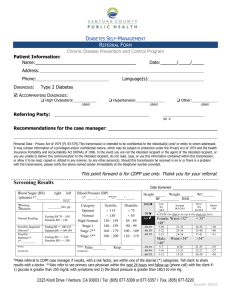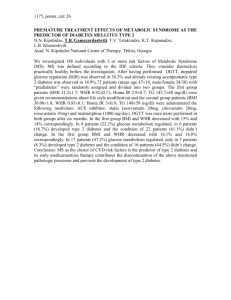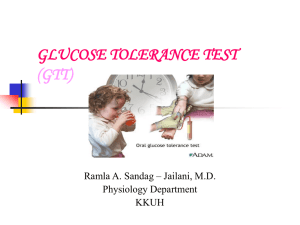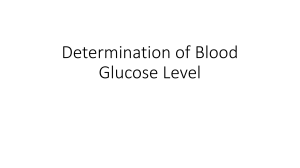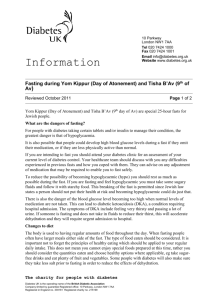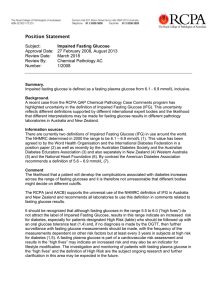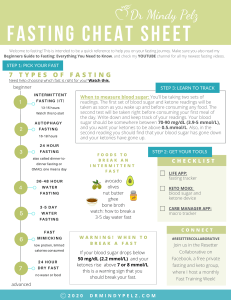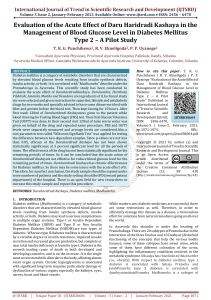Special Venipunctures
advertisement
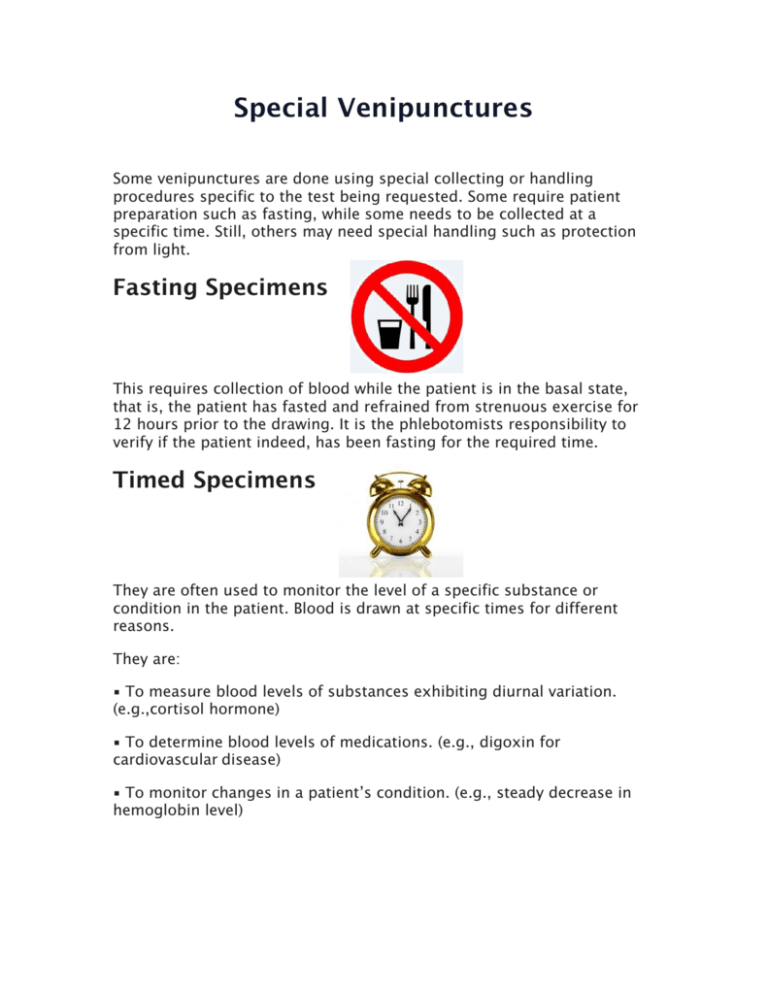
Special Venipunctures Some venipunctures are done using special collecting or handling procedures specific to the test being requested. Some require patient preparation such as fasting, while some needs to be collected at a specific time. Still, others may need special handling such as protection from light. Fasting Specimens This requires collection of blood while the patient is in the basal state, that is, the patient has fasted and refrained from strenuous exercise for 12 hours prior to the drawing. It is the phlebotomists responsibility to verify if the patient indeed, has been fasting for the required time. Timed Specimens They are often used to monitor the level of a specific substance or condition in the patient. Blood is drawn at specific times for different reasons. They are: ▪ To measure blood levels of substances exhibiting diurnal variation. (e.g.,cortisol hormone) ▪ To determine blood levels of medications. (e.g., digoxin for cardiovascular disease) ▪ To monitor changes in a patient’s condition. (e.g., steady decrease in hemoglobin level) Two-Hour Postprandial Test This test is used to evaluate diabetes mellitus. Fasting glucose level is compared with the level 2 hours after eating a full meal or ingesting a measured amount of glucose. Oral Glucose Tolerance Test (OGTT) This test is used to diagnose diabetes mellitus and evaluate patients with frequent low blood sugar. 3-hour OGTT is used to test hyperglycemia (abnormally high blood sugar level) and diagnose diabetes mellitus. 5hour OGTT is used to evaluate hypoglycemia (abnormally low blood sugar level) for disorders of carbohydrate metabolism. OGTT are scheduled to begin between 0700 and 0900. Therapeutic Drug Monitoring This test is used to monitor the blood levels of certain medication to ensure patient safety and also maintain a plasma level. Blood is drawn to coincide with the trough (lowest blood level) or the peak level (highest blood level). Trough levels are collected 30 minutes before the scheduled dose. Time for collecting peak level will vary depending on the medication, patient’s metabolism, and the route of administration (I.V., I.M., or oral). Blood culture (BC) They are ordered to detect presence of microorganisms in the patient’s blood. The patient will usually have chills and fever of unknown origin (FUO), indicating the possible presence of pathogenic microorganisms in the blood (septicemia). Blood cultures are usually ordered STAT or as timed specimen, and collection requires strict aseptic technique. PKU This test is ordered for infants to detect phenylketonuria, a genetic disease that causes mental retardation and brain damage. Test is done on blood from newborn’s heel or on urine.


